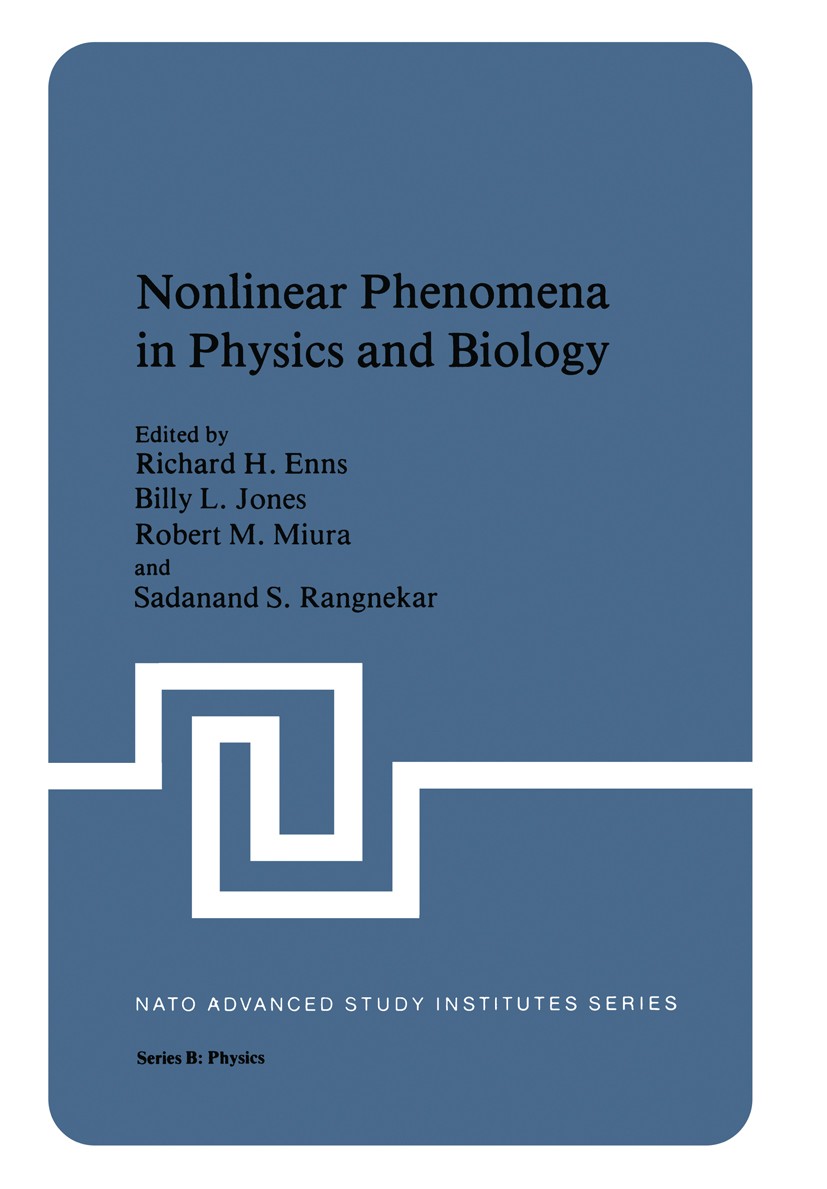| 书目名称 | Nonlinear Phenomena in Physics and Biology | | 编辑 | Richard H. Enns (Director),Billy L. Jones (Co-dire | | 视频video | http://file.papertrans.cn/668/667642/667642.mp4 | | 丛书名称 | NATO Science Series B: | | 图书封面 |  | | 描述 | The Advanced Study Institute (ASI) on Nonlinear Phenomena-in Physics and Biology was held at the Banff Centre, Banff, Alberta, Canada, from 17 - 29 August, 1980. The Institute was made possible through funding by the North Atlantic Treaty Organization (who sup plied the major portion of the financial aid), the National Research and Engineering Council of Canada, and Simon Fraser University. The availability of the Banff Centre was made possible through the co sponsorship (with NATO) of the ASI by the Canadian Association of Physicists. 12 invited lecturers and 82 other participants attended the Institute. Except for two lectures on nonlinear waves by Norman Zabusky, which were omitted because it was felt that they already had been exhaustively treated in the available literature, this volume contains the entire text of the invited lectures. In addition, short reports on some of the contributed talks have also been included. The rationale for the ASI and this resulting volume was that many of the hardest problems and most interesting phenomena being studied by scientists today ar.e nonlinear in nature. The nonlinear models involved often span several different disciplines, °a simp | | 出版日期 | Book 1981 | | 关键词 | Potential; animals; behavior; bifurcation; biological; biology; differential equation; dynamics; linear diff | | 版次 | 1 | | doi | https://doi.org/10.1007/978-1-4684-4106-2 | | isbn_softcover | 978-1-4684-4108-6 | | isbn_ebook | 978-1-4684-4106-2Series ISSN 0258-1221 | | issn_series | 0258-1221 | | copyright | Springer Science+Business Media New York 1981 |
The information of publication is updating

|
|
 |Archiver|手机版|小黑屋|
派博传思国际
( 京公网安备110108008328)
GMT+8, 2025-11-14 20:46
|Archiver|手机版|小黑屋|
派博传思国际
( 京公网安备110108008328)
GMT+8, 2025-11-14 20:46


